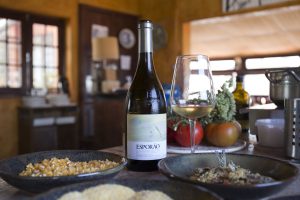At the beginning of the 17th century, there was a serious outbreak of pellagra that affected many people in Europe. For hundreds of years, pellagra was associated with the consumption of corn – in the United States it emerged at the same time as the cereal, reaching epidemic proportions. Much later, it was discovered that pellagra was linked to a lack of niacin, one of the B complex vitamins. Why did the Latin American Indians never have problems with the disease? Corn contains reasonable amounts of niacytin, a form of niacin that is not assimilated by the human body, coupled with sugars and proteins. An alkaline treatment of corn can remove these sugars and proteins from the niacin. The Indians boiled or fermented corn in a mixture of water and ash – the ash in water formed an alkaline solution that converted the niacytin into niacin using a process called nixtamalization.
Corn came to Europe, however, nixtamalization did not arrive in the same way. It turns out that it did in the Algarve and, for a very long time, corn was boiled to remove the eyes. As such, while pellagra raged on different continents, the Algarve produced and consumed a lot of corn. This primitive process meant that the plant produced the vitamin and, for that reason, it was much easier to find corn in the Algarve than in many places in America, which resisted nixtamalization because it was considered a primitive process used by “barbarians”.
cinza em água forma uma solução alcalina que é capaz de converter a niacitina em niacina, criando um processo chamado de nixtamalização.
O milho veio para a Europa mas a nixtamalização não chegou cá da mesma forma. Acontece que no Algarve chegou e desde há muito tempo que se ferventam os milhos para lhes tirar os olhos. Assim, enquanto a pelagra dizimava em muitos continentes, o Algarve produzia e consumia bastante milho. Esse processo primitivo permitia que o alimento produzisse a vitamina e, por isso mesmo, era muito mais fácil encontrar milho no Algarve que em muitos lugares da América, resistindo à nixtamalização que consideravam um processo primitivo e de “bárbaros”.


